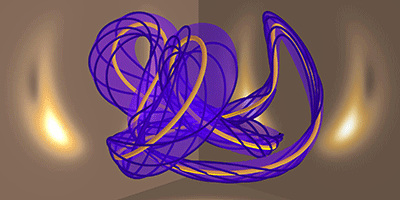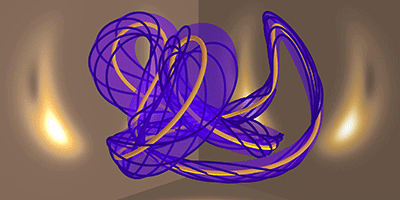Maxwell’s Knots
The branch of topology called knot mathematics pops up frequently in physics, from the classical meanders of fluid flow to the snaky twists and turns of quantum field theory. But getting exact solutions to these knotty problems is rare: typically these physical systems are nonlinear and cannot be solved analytically. One important case, however—Maxwell’s equations—has proved amenable to mathematical scrutiny. In a paper in Physical Review Letters, Hridesh Kedia of the University of Chicago, Illinois, and colleagues unveil a new class of solutions to these venerable formulas that encapsulate all possible knots and links in a toroidal configuration. The findings may hint at new ways to understand magnetic fields in plasmas or the behavior of quantum fluids like Bose condensates.
In the late 1980s, a researcher discovered exact solutions of Maxwell’s equations in free space (containing no electric charge) with the odd property that every field line formed a closed loop, and each loop was linked to another. This structure is called a Hopf fibration, which has been found in other places such as liquid-crystal physics (see 3 June 2013 Viewpoint). Kedia et al. now go a step further with their discovery of exact solutions that are both linked and knotted: the field lines are tied around each other inside a torus.
If these optical knots can be recreated with laser beams, they might offer new ways to trap cold atoms in interesting configurations. And imprinted on magnetic fields, the knotty solutions would provide new tools for confining plasmas. – David Voss





